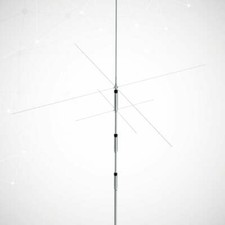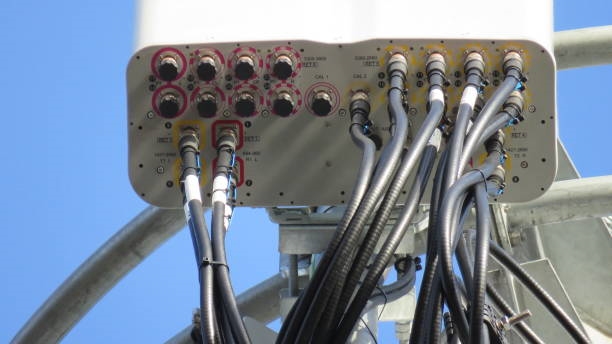 Overview
Overview
If you move into a property with strict rules, or if neighbors or household members object to visible antennas, you may need to hide your HF ground-plane (GP) vertical antenna. This article explains how to conceal a GP vertical inside a mast or flagpole using foam and fiberglass while keeping the antenna functional.
Materials and Approach
The basic approach is to build a hollow mast or flagpole that encloses the GP vertical antenna. Common materials are rigid insulation foam board, fiberglass cloth, and polyester or epoxy resin. Fiberglass work with resin is more challenging than simple foam construction, but it is within the reach of a determined beginner. If you prefer not to do the work yourself, a local boat repair or auto body shop typically has experienced fiberglass technicians who can produce custom mast bodies.
Design Considerations: Flagpole vs Pole
Check whether your property rules allow flagpoles. If not, a decorative lamp pole will often be acceptable. Structurally, the two approaches are similar. A flagpole uses a halyard and pulley system; a lamp pole uses a lamp housing and a fitted light element or decorative top. In either case the pole must be hollow so the GP vertical can be placed inside.
Building a Hollow Mast
Use a tapered square mast section to simplify construction. Measure the height of your HF GP vertical and calculate the internal clearance required. During fabrication you will need a removable internal form to hold the foam core before applying fiberglass and resin. Cheap OSB, plywood, or even layered corrugated cardboard can be used to make a removable form or mold. Because the foam core is not bonded to the form, the completed mast should pull away from the mold easily. To prevent resin from sticking the foam supports to the foam core, wrap the supports with wax paper.

Round Masts and Shape Variations
If you need a round mast, add more foam to the sides and shape it to the required profile. Dimensions depend on the antenna you use: taller antennas require more foam. Design the internal supports so they can be removed from the hollow cavity after the fiberglass shell cures. For single-band HF elements you may not need a dedicated cavity for the radiating element: a length of copper wire placed between foam layers can serve as the radiator. Remember to include any decorative top or finial required by your property authority, and be prepared to provide a product-style datasheet or drawings if approval is needed.
Lamp Housing and Lighting Options
If using a lamp pole, the lamp housing is straightforward to fabricate from foam and fiberglass. Instead of running mains wiring through the pole, consider a non-intrusive approach: install a cheap mirror or reflective element inside the lamp housing and illuminate it from ground-mounted fixtures aimed at the mirror. This avoids routing electrical wiring up the pole while achieving the same visual effect.
Fiberglass and Foam Work
There is extensive guidance online on working with fiberglass, resin, and foam cores, often in the context of boatbuilding. The basic process is to form a firm foam core, apply fiberglass cloth saturated with resin, and allow it to cure. Design the inner mold so the inner cavity is slightly tapered or chamfered to allow easy release when you pull the internal supports out.
Mounting and Support
For mounting hardware and bases, refer to standard flagpole and mast installation practices. Factory-made mast hardware and mounting kits can be used in conjunction with antenna mounting brackets designed for vertical HF antennas.
Fiberglass Characteristics and RF Considerations
Fiberglass is an inorganic, nonmetallic reinforcement material with good electrical insulation, heat resistance, and corrosion resistance. It is commonly used as reinforcement in composite materials, as an electrical insulator, thermal insulation, and in many industrial applications. Fiberglass typically consists of fine glass filaments bundled into strands and woven into cloth for composite layup.
When a vertical element is enclosed inside a fiberglass mast, the antenna's resonant frequency will shift slightly due to the dielectric constant and velocity factor of the surrounding material. The antenna's radiation properties remain essentially the same, similar to the difference between insulated and bare wire. There is no practical difference for RF transmission beyond the small resonant frequency adjustment, so tune the antenna accordingly.
 ALLPCB
ALLPCB







